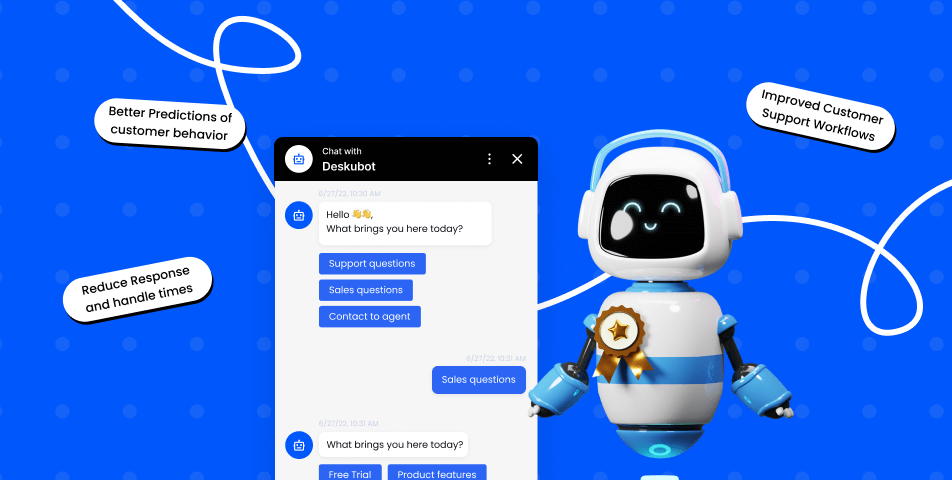✍️ Introduction: The AI Support Struggle
If you’ve ever tried using ChatGPT or other AI tools to answer customer questions, you know the results can be a mixed bag. Sometimes the response is helpful and empathetic; other times, it feels robotic or off-topic. For SaaS and e-commerce teams, where every interaction impacts retention and loyalty, poorly written AI replies can damage trust.
The secret isn’t the AI itself — it’s the prompt you feed it. Just like giving vague instructions to a new employee, vague prompts lead to vague answers. The good news? With the right frameworks, you can craft prompts that guide AI to produce human-like, on-brand, and helpful support replies every time.
That’s exactly what we’ll cover in this guide: practical strategies for writing AI prompts for customer support that save time, reduce errors, and improve customer experience.
📚 Why Prompts Matter in Customer Support
AI isn’t a mind reader. It follows instructions — no more, no less. The way you write a prompt directly impacts:
- Tone of voice → empathetic vs. robotic
- Clarity → concise vs. confusing
- Accuracy → aligned with product policies vs. misleading
- Efficiency → first-response resolution vs. endless back-and-forth
According to Harvard Business Review, well-structured prompts can dramatically improve AI outputs by providing context, guardrails, and role assignments. That means customer support teams don’t just need AI — they need prompt engineering skills.

🧩 Framework: Writing AI Prompts for Customer Support
Think of prompts as blueprints for conversations. A good one has three key ingredients:
1. Role & Context
Assign the AI a role: “You are a customer support agent for a SaaS company that provides a project management tool.” Add context: “The customer is frustrated because their billing was double-charged.”
2. Tone & Style
Define voice: “Respond with empathy, reassurance, and clear next steps.”
Bad prompt: “Write a response.”
Better prompt: “Write a polite, empathetic response that apologizes, explains, and provides a resolution in under 120 words.”
3. Guardrails & Specifics
Guide scope: “If unsure, escalate to a human. Avoid making refunds — instead, explain the process.”
Prompt Template Example:
You are a customer support representative for [Company/Product].
The customer’s issue: [insert problem].
Write a reply that:
- Uses a friendly, empathetic tone
- Explains the issue in plain language
- Provides clear next steps
- Stays within 100–120 words
- Ends with an offer to help further if needed
🛠 How My Magic Prompt Helps
Writing prompts from scratch is powerful but time-consuming. This is where My Magic Prompt comes in:
- 🔹 Prompt Builder: Structure prompts with roles, tone, and guardrails built-in
- 🔹 Prompt Templates: Pre-designed support reply templates for SaaS and e-commerce use cases
- 🔹 AI Toolkit: Organize, save, and refine your best prompts in one place
Even better? The Magic Prompt Chrome Extension lets you generate or insert optimized prompts directly inside your support tools — no tab-switching required.
🧠 Best Practices for AI Prompts in Customer Support
- Always add context → Include customer type, product, or prior issue history
- Set word count limits → Keeps replies concise
- Emphasize empathy → AI defaults to “neutral” unless told otherwise
- Create escalation rules → Tell AI when to hand off to humans
- Standardize tone → Build a style guide for prompts (professional, casual, friendly, etc.)
- Test & refine → Save the best prompts in your prompt library for consistency
✅ Quick Checklist: Good vs. Bad Customer Support Prompts
| Prompt Style | Example | Result |
|---|---|---|
| ❌ Bad | “Reply to this customer” | Generic, robotic |
| ✅ Good | “You are a support rep. Customer is upset about late shipping. Write a friendly, empathetic response under 100 words that apologizes and gives next steps.” | Human-like, helpful, brand-consistent |

❓ FAQ: AI Prompts for Customer Support
Q1. What’s the difference between a good and bad AI prompt?
A bad prompt is vague, leading to generic answers. A good prompt sets role, context, tone, and scope, resulting in more accurate replies.
Q2. Can AI handle angry or emotional customers?
Yes — but only if guided. Prompts should instruct AI to acknowledge emotion and respond with empathy before offering solutions.
Q3. How do I organize my customer support prompts?
Tools like My Magic Prompt’s Prompt Builder let you create folders, templates, and libraries so your team reuses the best prompts consistently.
Q4. Should AI replace human agents?
No. AI works best as a first-response assistant. Complex or sensitive issues should still escalate to human support.
Q5. Which AI tools work with these prompts?
ChatGPT, Claude, Gemini, and other LLMs. My Magic Prompt is designed to optimize prompts across all of them.
🤍 Wrapping Up
Great customer support doesn’t come from AI alone — it comes from well-crafted prompts that make AI sound like your best support rep.
By applying frameworks, templates, and best practices — and by using tools like My Magic Prompt — you can scale support without sacrificing empathy or quality.

